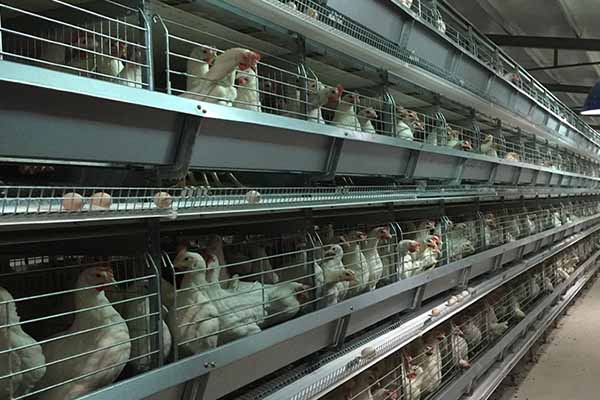What’s the Ventilation Requirement in Cage Housing?
Understanding the Importance of Ventilation in Chicken Cage Housing
Ventilation is a critical aspect of poultry farming, particularly in cage housing systems. Proper ventilation ensures the health and productivity of the chickens, while also maintaining a comfortable environment. In this article, we will discuss the ventilation requirements in cage housing and how to meet them effectively.
1. Air Exchange Rate
The primary goal of ventilation is to maintain an adequate air exchange rate. This rate should be between 10-20 cubic meters per hour per bird, depending on the climate and the size of the cage. A higher rate may be necessary in hotter climates to dissipate excess heat.
2. Air Quality
Poor air quality can lead to respiratory diseases and reduced productivity. The air should be free of dust, ammonia, and other harmful gases. To achieve this, ensure that the ventilation system is designed to filter out these contaminants.
3. Temperature Control
Proper ventilation helps regulate the temperature inside the cage housing. The ideal temperature for chickens is between 70-75°F (21-24°C). In colder climates, additional heating may be necessary, while in warmer climates, ventilation can help dissipate excess heat.
4. Humidity Control
Humidity levels should be kept between 50-70%. High humidity can lead to increased respiratory diseases and other health issues, while low humidity can cause stress and discomfort for the chickens.
5. Ventilation System Design
A well-designed ventilation system is essential for meeting the ventilation requirements in cage housing. Here are some key components to consider:
– Inlet and exhaust fans: These should be strategically placed to ensure even distribution of air throughout the housing.
– Air filters: These should be installed to remove dust and other contaminants from the air.
– Temperature and humidity sensors: These sensors will help you monitor and adjust the ventilation system to maintain optimal conditions.
6. Regular Maintenance
Regular maintenance of the ventilation system is crucial to ensure its effectiveness. This includes cleaning filters, inspecting fans, and checking for any leaks or damage.
Conclusion
Proper ventilation is essential in cage housing systems to maintain the health and productivity of chickens. By understanding the ventilation requirements and implementing an effective system, you can create a comfortable and safe environment for your birds.
If you are considering a new cage housing system or need to improve your existing ventilation, contact us at LIVI Mechanical. We offer free chicken farming design plans and equipment quotes to help you get started.





